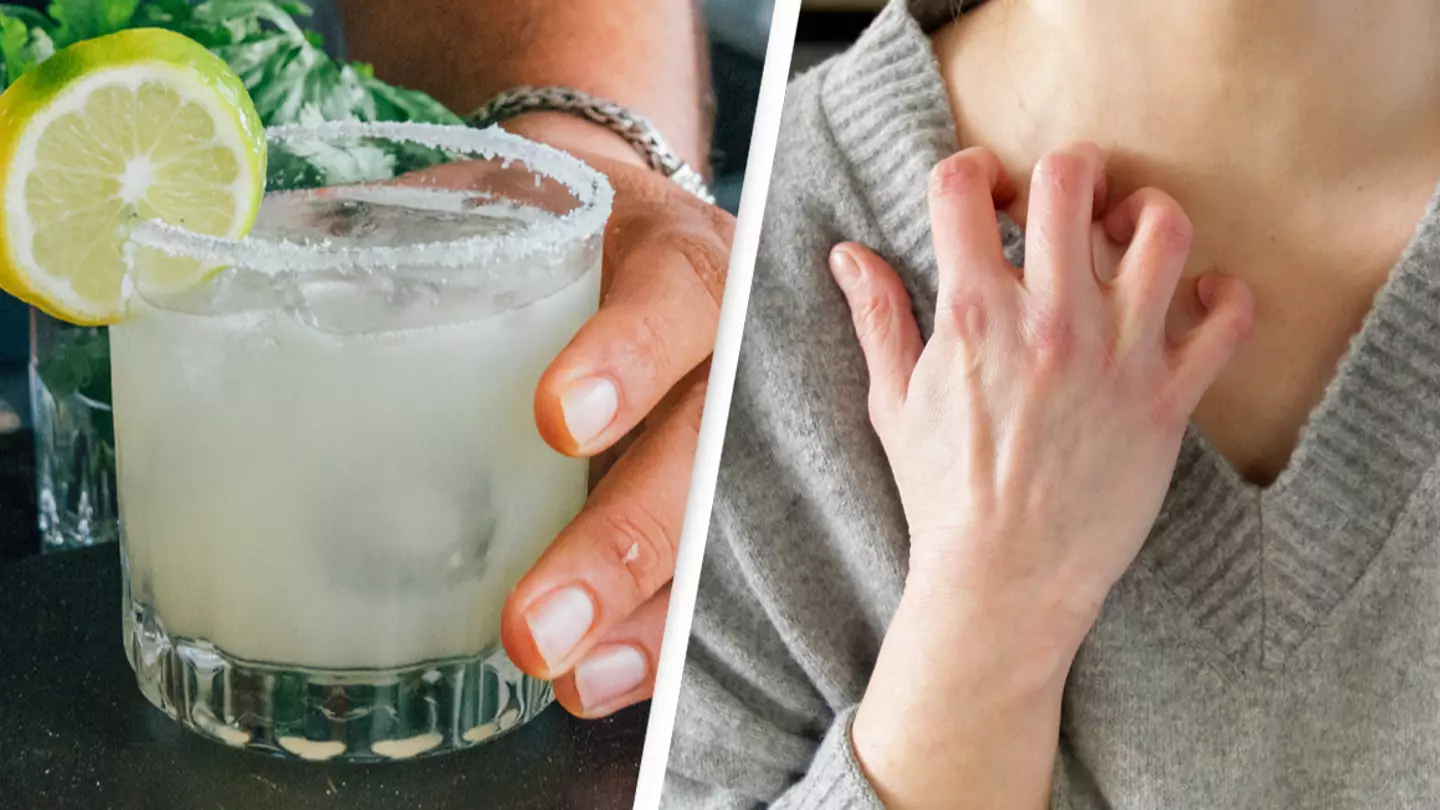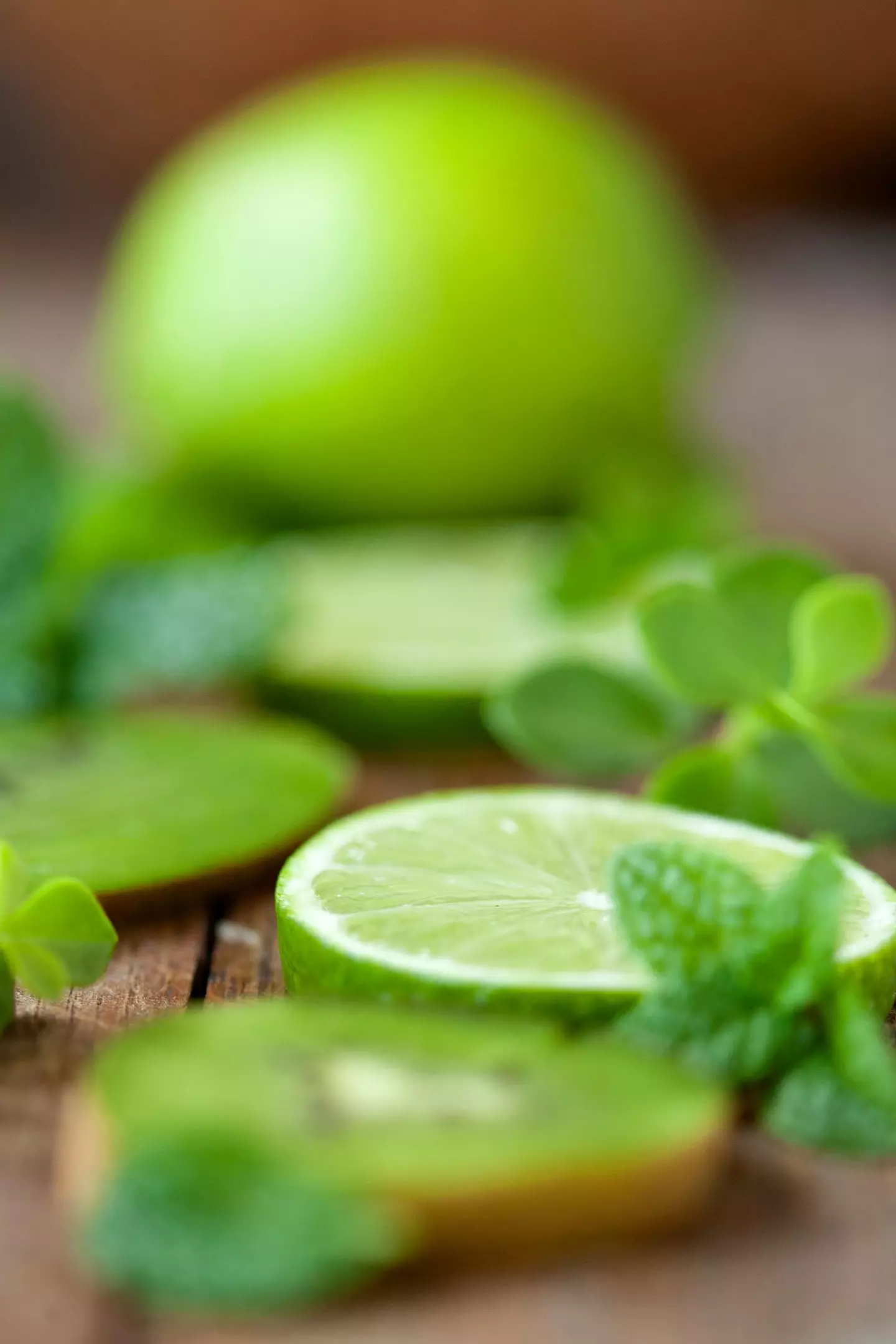
Dermatologists are speaking out in warning to cocktail lovers to raise awareness of a little-known skin condition.
With longer periods of daylight creeping in and some days beginning to feel like spring or even summer is here, it may be tempting to whip out the drinks trolley, crack open the cans or shake up a cheeky cocktail.
However, if a margarita is your go-to tipple, then you should proceed with caution as if you don't handle some of the ingredients properly, you could end up no longer soaking up the rays but having to be holed up inside your doctor's waiting room instead.
To make a proper margarita, first, you need sun and preferably a beach, but if not, a balcony or garden will do too.
Advert
Then you'll have to supply yourself with tequila, triple sec, lots of ice, some salt and limes of course.
And it's the final ingredient which dermatologists want to raise awareness about most.
Why? Because of a condition called photocontact dermatitis.

The condition
Photocontact dermatitis is 'an adverse skin reaction that occurs when certain chemicals are applied to the skin and then exposed to the sun,' Triage's website explains.
Advert
It continues: "Photocontact dermatitis can be either phototoxic (commonly caused by plants), photoallergic (commonly caused by certain medicines and sunscreens), or both.
"Phototoxic reactions result from direct tissue damage and photoallergic reactions occur due to the body’s immune response."
If you have this condition, then you may experience symptoms like 'severe itching, burning, and blisters on the area of skin that has contacted the irritant'.
And if your skin comes into contact with the juice of a lime, it could potentially end up having such a reaction - the condition also being nicknamed 'margarita rash'.

How it happens
Dermatologist at Cleveland Clinic Dr. Melissa Piliang explained to NBC News that all it takes is being at an event like a barbecue and 'splash[ing]' lime on 'their arm' and then staying outside in the sun and getting 'sunburned in the pattern of the lime splash'.
Advert
"Or, they got lime on their hand and they had a shirt off and they put their hand on their belly and then they have a big sunburn handprint," she adds.
But is everyone susceptible to the condition?

Who can be affected
Assistant professor of dermatology at Keck School of Medicine at the University of Southern California, Dr. Brandon Adler says that many people 'falsely assume that it’s only fairer-skinned individuals who develop sun sensitivity'.
Advert
He explains: "The right exposure to the right citrus in the right sunlight will cause this in anybody
"[...] There’s a good body of data that’s emerged showing that people with darker skin tones are also susceptible."
The rash may also take a few days opposed to a few hours to show up and while some go away quickly, other 'very chronic conditions' can see it linger.

How to avoid it or treat it
Basically, you just have to make sure your wash your hands thoroughly with soap and water after coming into contact with limes or other similar fruit to get all the juice off.
Advert
And if you forgot and have ended up with a rash?
Apply a cool towel or you can go to the chemist and pick up a cream or anti-inflammatory like ibuprofen.
A reaction could also be a sign of an allergy, so be wary of using whatever fruit you handled in the future or if it's really bad, you should take a trip to a physician or dermatologist.
Topics: Food and Drink, Health